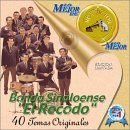
El Recodo
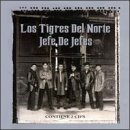
Los Tigres del Norte
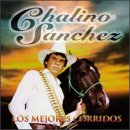
Chalino Sanchez
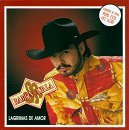
Ramon Ayala

Corridos Revolucionarios
Regional Music of Mexico
 El Recodo |
 Los Tigres del Norte |
 Chalino Sanchez |
 Ramon Ayala |
 Corridos Revolucionarios |
What is Mexican music? If you watch what passes off as musical variety shows on the major Mexican television networks, you may believe that this is just popular western music sung in Spanish. If you go to Mexico City as a tourist, you may have gone to Garibaldi Plaza to listen to the mariachi singers. But there are in fact many forms of regional music within Mexico, for which the definitions and borders are by no means clear.
A very well-known form of regional music in Mexico is the norteño style. Its origins are with the corrido ballads that are sung along the US-Mexico border. This music style contains a hybridization of many other styles: waltz, polka, mazurka, cumbia, tejano, country music, vallenato, etc. There is no single norteño music form, but there are probably as many styles as there are artists. The popularity of norteño music may be due to the lyrics, which is typically a story about 'common' people, such as illegal immigrants, small-time drug dealers (narcotraficantes) , jilted lovers, corrupt public officials, etc. Grupera music is a term that is sometimes used to include both the norteño and tejano styles as well as tropical and romantic pop styles. Perhaps the distinction of grupera from norteño is more on account of the romantic, apolitical lyrics.
Another very popular Mexican music form is ranchera, which lifts romantic passion to glorious heights. This unbridled passion is sometimes joyous and celebratory, with the singer and audience yelping out "¡ay ay ay ay ay ay!" over what seemed to be the most mundane matter. More often, this passion is not of the amorous kind, but it is a sad one that is full of nostalgia and sorrow. Most noteworthy is how the singers stretch out the final note of the line in a never-ending glissando.
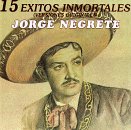 Jorge Negrete |
 Vicente Fernández |
 Pedro Infante |
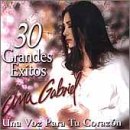 Ana Gabriel |
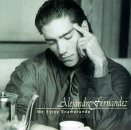 Alejandro Fernández |
We will now cite some survey data from the TGI Mexico study. This is a survey of 12,400 persons between the ages of 12 and 64 years old conducted during 2001. These respondents were shown a list of radio program types, and asked to indicate their frequency of listening. The top-level results are as follows:
The sizes of these audiences pale in comparison to the mainstream genres such as popular and hit music. Of course, niche music genres should be characterized solely in terms of the total audience size, for their compositions are equally significant for understanding their appeal. In the following table, we show the demographic characteristics of their audiences:
| Demographic classes | % listened to grupera frequently | % listened to norteño frequently | % listened to ranchera frequently |
| Geography Mexico City Guadalajara Monterrey Balance area |
25% 24% 27% 30% |
17% 20% 21% 25% |
20% 23% 20% 28% |
| Socio-economic class AB C+ C D+ DE |
10% 15% 21% 29% 38% |
8% 12% 18% 22% 29% |
9% 14% 18% 25% 31% |
| Age/Sex Male 12-19 years old Male 20-24 years old Male 25-34 years old Male 35-44 years old Male 45-54 years old Male 55-64 years old Female 12-19 years old Female 20-24 years old Female 25-34 years old Female 35-44 years old Female 45-54 years old Female 54-64 years old |
22% 26% 28% 29% 31% 20% 30% 30% 31% 28% 22% 18% |
16% 17% 21% 26% 30% 20% 21% 22% 22% 21% 19% 18% |
18% 18% 24% 27% 31% 27% 19% 24% 25% 25% 27% 24% |
| Marital Status Single Union with mate Married Separated Divorced Widowed |
25% 47% 27% 35% 23% 26% |
17% 35% 22% 29% 17% 27% |
18% 40% 25% 34% 20% 33% |
| Education Doctorate/masters degree Diploma University complete University incomplete Preparatory complete Preparatory incomplete Technical complete Technical incomplete Secondary complete Secondary incomplete Primary complete Primary incomplete Did not attend school |
5% 9% 12% 15% 23% 22% 19% 21% 33% 32% 37% 34% 41% |
5% 5% 10% 13% 16% 16% 14% 17% 25% 23% 29% 27% 45% |
6% 5% 11% 12% 17% 15% 16% 20% 26% 29% 35% 33% 50% |
| Comprehension of spoken English Very good Some Very little Nothing at all |
13% 19% 23% 33% |
12% 14% 18% 26% |
9% 15% 19% 30% |
| TOTAL | 27% | 21% | 23% |
The demographic profiles of the radio listeners to grupera, norteño and ranchera music on radio are distinctly skewed towards the less affluent and less educated, reflective of their traditional rural roots. They are also more likely to be outside of the three major metropolitan areas, but this is not totally clear because the 'balance area' consists of 24 smaller cities with population of 400,000 or more across the entire country. If we could have broken out the 'balance area' by north-south, for example, we would probably see higher incidences more towards the north than the south.
According to the following table, the radio listeners to grupera, norteño and ranchera music are more likely to be everyday listeners of radio in general. So this is a indicator of their loyalty to their music.
| Radio Listening Frequency | All persons | Grupera listeners | Norteño listeners | Ranchera listeners |
| % Listened every day | 28% | 39% | 40% | 40% |
Loyal fans to a radio format would normally make for a good advertising segment through transference. Unfortunately, according to the following table, these fans are also less likely to pay attention to radio advertising messages!
| Attention to radio ads | All persons | Grupera listeners | Norteño listeners | Ranchera listeners |
| % 5 (always pay attention) % 4 % 3 % 2 % 1 (never pay attention) |
22% 17% 25% 17% 19% |
7% 18% 29% 23% 24% |
7% 17% 24% 25% 28% |
8% 18% 27% 23% 25% |
| TOTAL | 100% | 100% | 100% | 100% |
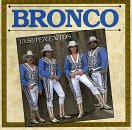 Bronco |
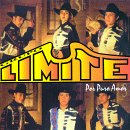 Límite |
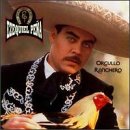 Ezequiel Peña |
 Laura Flores |
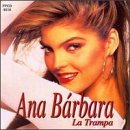 Ana Bárbara |
![]()
WWW REFERENCES
BOOKS
(posted by Roland Soong, 11/22/2001)
(Return to Zona Latina's Home Page)